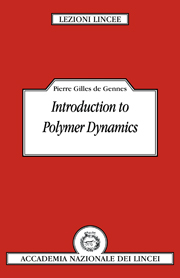4 - An elastic theory of drag reduction
Published online by Cambridge University Press: 07 October 2009
Summary
Introduction
Flexible polymers in dilute solution can reduce turbulent losses very significantly (Lumley, 1969). The main (tentative) interpretation of this effect is due to Lumley (1973). He emphasized that remarkable viscoelastic effects can occur only when certain hydrodynamic frequencies become higher than the relaxation rate of one coil 1/Tz (the ‘time criterion’). He then proposed a crucial assumption: namely that, in regions of turbulent flow, the solution behaves as a fluid of strongly enhanced viscosity, presumably via regions of elongational flow. On the other hand, Lumley noticed that – for turbulent flow near a wall – the viscosity in the laminar sublayer near the wall should remain low: this last observation does agree with the viscometric data on dilute linear polymers in good solvents, which show shear thinning (Graessley, 1974). Starting from the above assumptions, and performing a careful matching of velocities and stresses beyond the laminar layer, Lumley was able to argue that the overall losses in pipe flow should be reduced.
This explanation has been rather generally accepted. However, it is now open to some question: in recent experiments with polymer injection at the center of a pipe, one finds drag reduction in conditions where wall effects are not involved (McComb and Rabie, 1979; Bewersdorff, 1982, 1984).
This observation prompted Tabor and the present author to try a completely different approach (Tabor and de Gennes, 1986): namely to discuss first the properties of homogeneous, isotropic, three-dimensional turbulence without any wall effect, in the presence of polymer additives.
- Type
- Chapter
- Information
- Introduction to Polymer Dynamics , pp. 34 - 54Publisher: Cambridge University PressPrint publication year: 1990

